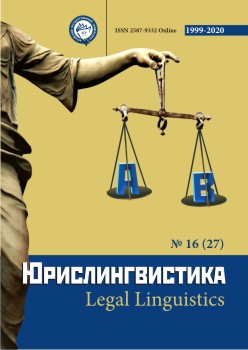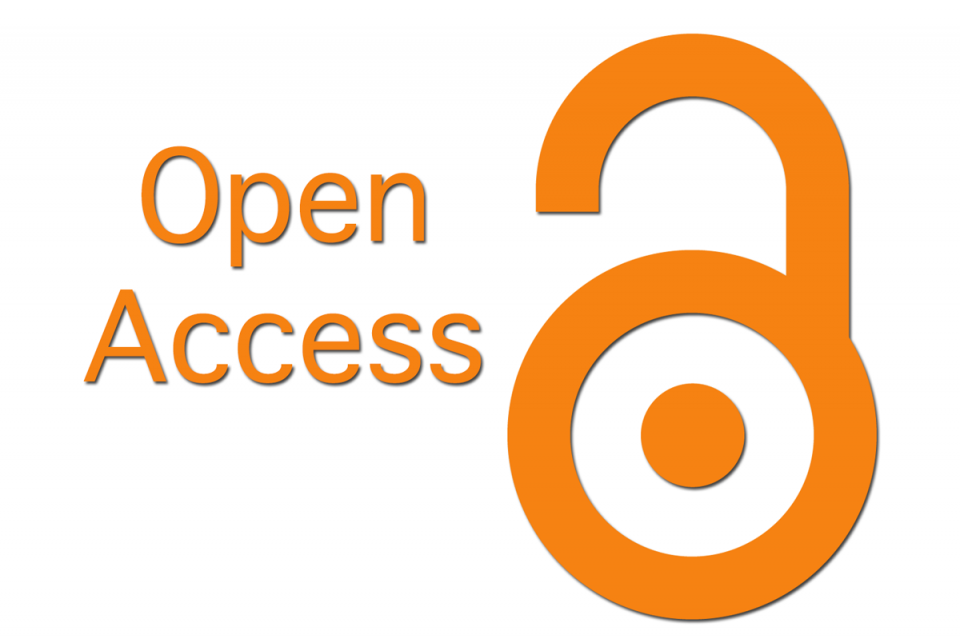THREAT IN THE POLITICAL DISCOURSE OF A SOCIAL NETWORK AS A MEANS OF SPEECH INFLUENCE
Abstract
The article discusses the mechanisms of speech influence of political discourse based on conflictogenic texts of mensive nature. The strategies, methods and tactics of the addressee, which determine the pragmatic orientation of the statements of politicians on the social network, are defined and characterized. A detailed analysis of the speaker’s intentions, realized at the lexical, grammatical and stylistic levels and having a strong persuasive effect, is carried out . The language of a politician correlates with the speech organization of the picture of the world, which forms certain opinions regarding events or personalities in the mass consciousness.
Downloads
Metrics
References
Баранов А.Н. Введение в прикладную лингвистику. – М., 2001.
Демьянков В.З. Политический дискурс: история и современные исследования. – М., 2002. – С. 32-43.
Долинин К.А. Имплицитное содержание высказывания / Вопросы языкознания. – 1983. – № 6. – С. 38-43.
Ерофеева Е.В. Речевые акты угрозы и предупреждения и их косвенная реализация во французском дискурсе / Политическая лингвистика. – 2014. – № 4(50). – URL: https://ru.booksc.xyz/ireader/50774592
Колшанский Г.В. О природе контекста / Вопросы языкознания. – 1959. – № 4. – С. 47-53.
Серль Дж. Что такое речевой акт / Новое в зарубежной лингвистике. Вып. 17. – М., 1986. – С. 151-169.
Серль Дж. Косвенные речевые акты / Новое в зарубежной лингвистике. Вып. XVII. – М., 1986. – С.195-222.
Шейгал Е.И. Семиотика политического дискурса. – М., 2004.
References
Baranov, A.N. (2001). Introduction to Applied Linguistics. Moscow (in Russian).
Demyankov, V.Z. (2002). Political discourse: history and modern research, 32-34 (in Russian).
Dolinin, K.A. (1983). Implicit content of utterance. Questions of linguistics, 6, 38-43 (in Russian).
Erofeeva, E.V. (2014). Threat and warning speech acts and their indirect implementation in French discourse / Political Linguistics, 4 (50). Available from: https://ru.booksc.xyz/ireader/50774592 (in Russian).
Kolshansky, G.V. (1959). On the nature of the context. Questions of linguistics, 4, 47-53 (in Russian).
Searle, J. (1986). What is a speech act. New in foreign linguistics, 17, 151-169 (in Russian).
Searle, J. (1986). Indirect speech acts. New in foreign linguistics, 17, 195-222 (in Russian).
Sheigal, E. I. (2004). Semiotics of political discourse. Moscow. (in Russian).
Copyright (c) 2020 Дарья Коротаева, Лилит Месропян

This work is licensed under a Creative Commons Attribution 4.0 International License.
The authors, which are published in this journal, agree to the following conditions:
1. Authors retain the copyright to the work and transfer to the journal the right of the first publication along with the work, at the same time licensing it under the terms of the Creative Commons Attribution License, which allows others to distribute this work with the obligatory indication of the authorship of this work and a link to the original publication in this journal .
2. The authors retain the right to enter into separate, additional contractual agreements for the non-exclusive distribution of the version of the work published by this journal (for example, to place it in the university depository or to publish it in a book), with reference to the original publication in this journal.
3. Authors are allowed to post their work on the Internet (for example, in a university repository or on their personal website) before and during the review process of this journal, as this may lead to a productive discussion, as well as more links to this published work (See The Effect of Open Access).











